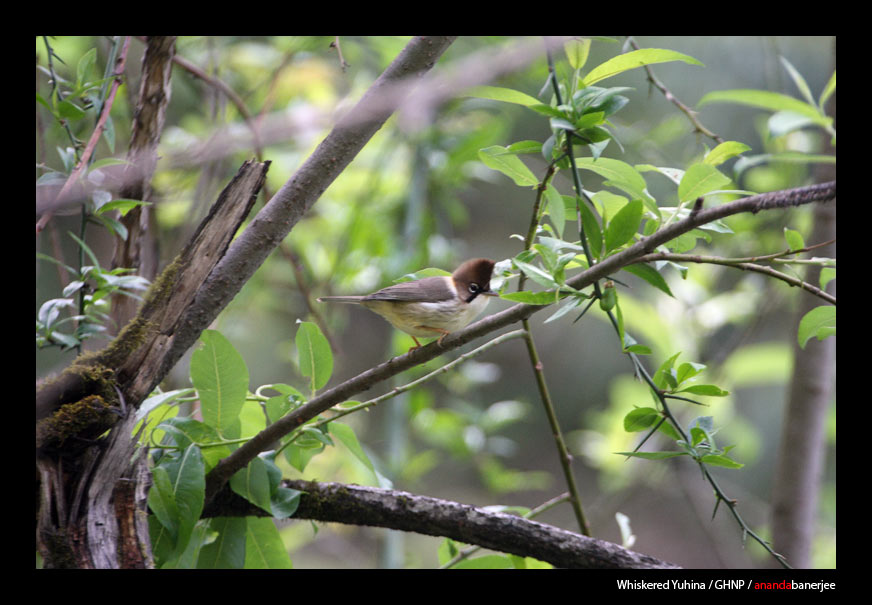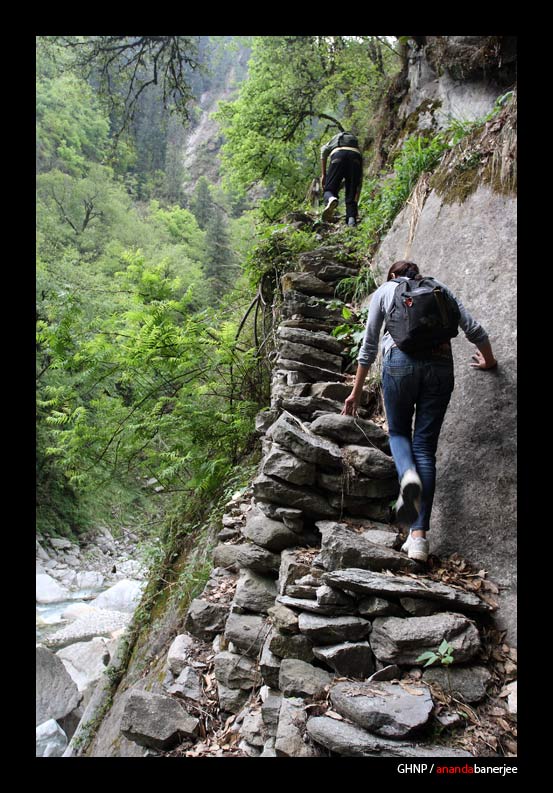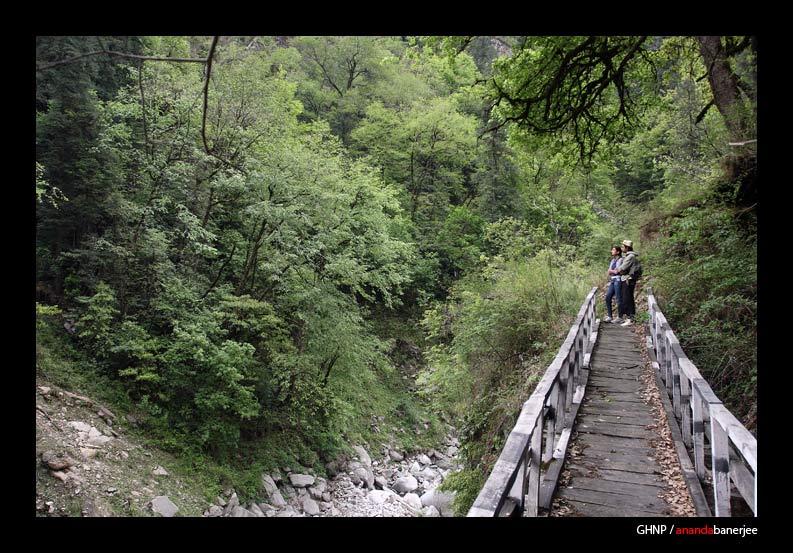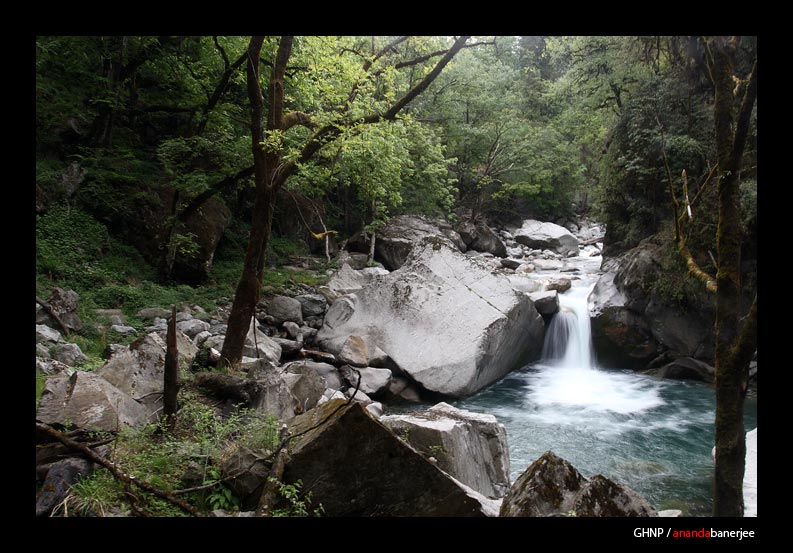Most of my friends and family have already dismissed me as an eccentric because I take off for the high mountain climbs every season the snow melts. Why can’t I join the mainstream rush to the driveable hill retreats, they ask me. All I tell them is what I am sharing with you now, that there’s no bigger joy than the nirvana at the mountain top after a hardy long trek, no celebration bigger than the one where you have tested and surpassed your mind and spirit, no party that gives you a Himalayan high and no temple that renews your faith.
It’s so metaphorical, the slipping, falling, clambering, even crying with pain on the slopes. And then finding yourself in a lily meadow, camping under a starry night, the breeze coursing through your pores and embalming your soul. It’s like breaking up and becoming whole again. For another day in the journey called life.
A 12-hour drive criss-crossing four states gets me away from the sweltering heat of Delhi and into a few layers of woollens. My destination is Sairopa, a quaint little village by a cascading mountain stream in the Tirthan valley where I meet up with my host Ankit Sood, a campaigner and conservationist for the western Himalayan environment. I am on the fringes of civilisation and the gateway to the wild. A compulsive trekker himself, Ankit has meticulously planned out my logistics for the next four days in the Great Himalayan National Park. The temperate and alpine ecosystems combine here in one geographical sweep which makes this a virtual animal planet. And it is the glaciers here that have birthed some of our great rivers, the Indus, Beas and Satlaj.

The overwhelming bigness and silence of the surrounds helps me spot an amazing array of birds without much effort : Bulbuls, Laughing thrushes, White eyes, Flycatchers, Warblers and more. Craning through my field glasses, and following the birds flit from tree to tree, I seem to have unwittingly padded on some shrubs and rocks and brought out the skinks and monitor lizards. Finding the unfamiliar, chocolatey smells of the Snickers that I am munching on, they get nosey and peep out of crevices. But I get drawn by clumps of iris scattered all over the place. So excited am I to see these purple flowers in bloom that I ask my porters to stop. They race towards me thinking I have brushed myself against a stinging nettle and one of them even grabs a cannabis leaf growing in the wild to heal my supposed wound. But as a trekker, I’ve learnt the delicate art of tip-toeing past this troublesome weed, hands held high, like a gesture of surrender. Only this is willful surrender to nature. Rows and tufts of the iris shrub roll down the lower hills, the sun and shade from the trees creating a magical web with specks of blue. We wade through a small stream with a water wheel, cross a wooden bridge and go around a quaint cottage with a patch of greens and shocking pink rose bushes, all making for picture-book countryside.

The mountain weather gets as fickle as ever; the brilliant cobalt suddenly turns grey as the sun hides behind the clouds. And just as we speed up, thinking we will be drenched, we turn a sharp bend to find the sun smiling at us again. In a short time, we reach our camp site at Rolla, a tiny patch of green by the river that has just about squeezed itself between two mountains. I dip my tired feet in the icy waters to take way the heat of the trek. With the sun on the wane, the temperature drops sharply and we get a campfire going well before darkness. Some of the clouds sink lower into this valley bowl, hovering over us, damp and cold. I huddle closer to the burning logs only to retire to my tent after a simple but delicious dinner cooked by the porters.
I am woken early by bird songs, an un-orchestrated choir. The Blue whistling thrush has a constant pitch and gets itself heard above the cacophony of laughing thrushes. The Yuhinias, Tits, Warblers and Rufous sibias keep the rhythm going, branch to branch, tree to tree. Their boundless energy inspires me to get ready for the steep climb in the course of the day. The trek to Shilt is more or less a vertical track of 1,000 m. And I have to be back at Rolla by sundown. But it is in this terrain that you find the enigmatic and beautiful Western Tragopan, the state bird of Himachal Pradesh, belonging to the pheasant family. And I don’t want to miss my date with it.
Fortified with enough glucose, energy bars and packed food, we proceed from Rolla, gaining height with every step, often hunkering down on all four to get a better grip and pull ourselves up. Soon, I get a bird’s eye view of our camp and the river. It’s tough negotiating the next few turns, sometimes belly-crawling, sometimes clinging to branches, sometimes spread-eagling myself against boulders perched precariously on sharp cliffs. But the giant oaks and deodars stretch out their friendly arms, waiting to cushion my every fall. I find myself reasons to take this challenge. And soon enough find answers, in the dots of survival below, where humans and cattle appear no different. In the drop-down blue valleys and the snow-covered peaks a hand and palm away. Am I on the stairway to heaven? If this is my final moment of ascension, I am ready. I shut my eyes.

After about two hours of following the sinuous ridge, the trail flattens out among spruce trees, which are even taller and bigger, soaring to well over 100 ft and about four to five feet in diameter. We hear the piercing calls of a flying pheasant but don’t see it. My porters pan the skies and trees above but I throw myself back to the ground amid the bobbing flowers. There are tiny violets, may apples, Solomon’s seal and trillium, may be a throwaway slice of the Garden of Eden. But my porters won’t let me be and wend their way down a ledge. Before I can ask why, they hush me up and make hand gestures to follow their steps, controlled and noiseless. As they hedge their way around, moon walking along a slippery ridge, I cannot help but crunch a few leaves and snap a few twigs. Suddenly, the porter in the lead stops and motions me to take cover. Looking down a steep drop to the left, I make myself scarce by clinging to an old stump as unobtrusively as possible. My porters ask me to lie low as we hear the pheasant calls again. I turn and another 100 feet below me on the right is a spectacular male Western Tragopan standing out in the open. He is on a small ridge between the slope that we are on and another area with a low understorey of ringal bamboo.
It’s mating season and this one’s a male, with a spectacular black and white spotted coat, a bright orange crown and a blue neck. Sensing that a female is soaring around, he’s crept out of his hollow in the trees and is showing off his stuff, two blue horns on his head, like the Greek God Pan after whom he is named. He responds ardently, full-throated, his neck bulging into lappets that appear purple with pink margins. Wou-weee, he goes as he balloons himself up to catch her fleeting eye. I peep out a little more to appreciate the finesse of his coat and notice each white spot is encircled by a crimson band. But curiosity is my undoing. He flies off, sensing alien presence. And I haven’t even got him on camera. Maybe he is a mythical creature, more seen and talked about, but never within human reach.
We move uphill to reach Shilt beyond the tree line in three hours, which even the porters agree, is an achievement. Coming from the dark forests below, you feel like Maria Von Trapp in the opening sequence of The Sound of Music, light-hearted and giddy with passion, bounding across a meadow full of yellow flowers. It’s a wonder moment of a genie uncorked from a bottle and I gaze at the snow-capped peaks of Rakhundi and Chanani rising from the wild grass, beckoning me to run to them. This is clearly a pleasure for the chosen few. The Lammergeier or the bearded vulture soars below my feet as I live an enchanted moment on top of the world, with the jumble of hills bowing to me.
Returning to Rolla, I get company in a fascinating duo of a 65-year-old German grandmother trekking with her 17-year-old grandson. Bonding? No. Testing each other? No. Just pure fun, they say as we settle around a fire with a cup of tea and biscuits. We are joined by another group of young Mumbaikars ‘DJ Mukul, Binal, Shaan and Ami’ who are on their first Himalayan trek. It’s a full house and time flies around the bonfire with generous helpings of tea and snacks courtesy the fresh arrivals. We exchange notes about the climb since I am a returnee and are united in our purpose of running away from our chaotic city lives. Delhi, Mumbai, Berlin, it doesn’t matter which, a grind is a grind. Turns out it is Ami’s birthday. There’s no cake but celebrate we must. I bring out my Toblerones which Ankit had packed in good numbers and the German grandma manages a loud whistle, blowing a blade of grass held between two thumbs. In Germany, cowherds communicate with each other in the Alps by hooting this way. And then the Gods join the party. A full moon slides out of the black mountains and floods the tiny river gorge like a spotlight. We don’t need torch light or the fire. All of us look up and utter the same word, ‘Wow.’
A motley crowd of wanderers thinking alike for one brief moment. And as the silken river rustles over its rocky course, Ami says this is the most extraordinary birthday that she will ever have.
The following morning takes me further along the river into the forest. The Germans are headed to Shilt, the Mumbaikars want to trek along the river. Mine is a virgin trail, so I have to loop over boulders, pad softly through landslides, jump over fallen trees, go uphill and downhill, cower under the alder, circle the poplar, tunnel under the willow. That’s how I find exotic shrubs and herbs such as Daphne, Desmodium, Indigofera, Soraria and Viburnum. I flush out a Khaleej pheasant but it goes hither thither, tiring me out enough to give up the chase. Meanwhile, my porter friends are pricked to attention and never let me out of sight. They had seen a broken anthill, clearly an indication that the Himalayan black bear had walked these paths in search of food. It hides in dark spaces and my friends insist I abandon the idea of roaming the woods.
After traversing a number of bridges, old and new, I reach Chalocha. A forktail shows up briefly along the stream but I get no other activity. As my porters halt by the stream, I take a power nap under a rhododendron bush.
I catch up with my Mumbai friends on the way back, cavorting in the white water around the half way mark from Rolla. They have been trying to fish trout, most likely to be found in these icy waters. But it’s not an easy task because you can’t sit at one place, you have to trek the stretch of the bank looking for a suitable pool. Even if you do, the trouts are intelligent, camouflaging themselves in submerged rocks. Ami gets excited when she feels a tug in her line but is mighty disappointed to find a tadpole! They decide to give up and we walk back to Rolla where the Germans are back from Shilt. They have missed the Tragopan but have been rewarded by many sightings of the Monal pheasant.
It rains on the last day, confining us to our tents. But then the sky clears up a little short of noon, allowing us to climb down as planned. It’s rained on purpose, I reason. Or we would have never held hands while walking the wet and slippery forest, never seen the slate-headed parakeets whoosh down the gorge waving their long yellow tails at us, never walked with strangers in the mist and definitely never ever seen a rainbow dissolve in our souls. Some moments are better felt than seen, so be here.





Wonderful !
The description of GHNP is so vivid that I could feel myself in the park and enjoyed the treks. Only a true nature can give such a description of nature.
a beautiful narrative of what i agree is the most fulfilling experience in life….when you realise there’s so much to see around only will you then realise what u’ve missed….
Really a very very wonderful place to visit….One should try to xplore more and more…as it never ends….
WE ALL LOVE U HIMACHAL….
WE LOVE U SHIMLA…
Anup Ranta.
A Beautiful Place Himachal Pradesh. We all Love Himachal Pradesh . We Love u Dharamshala.
Sanjay Bhullar